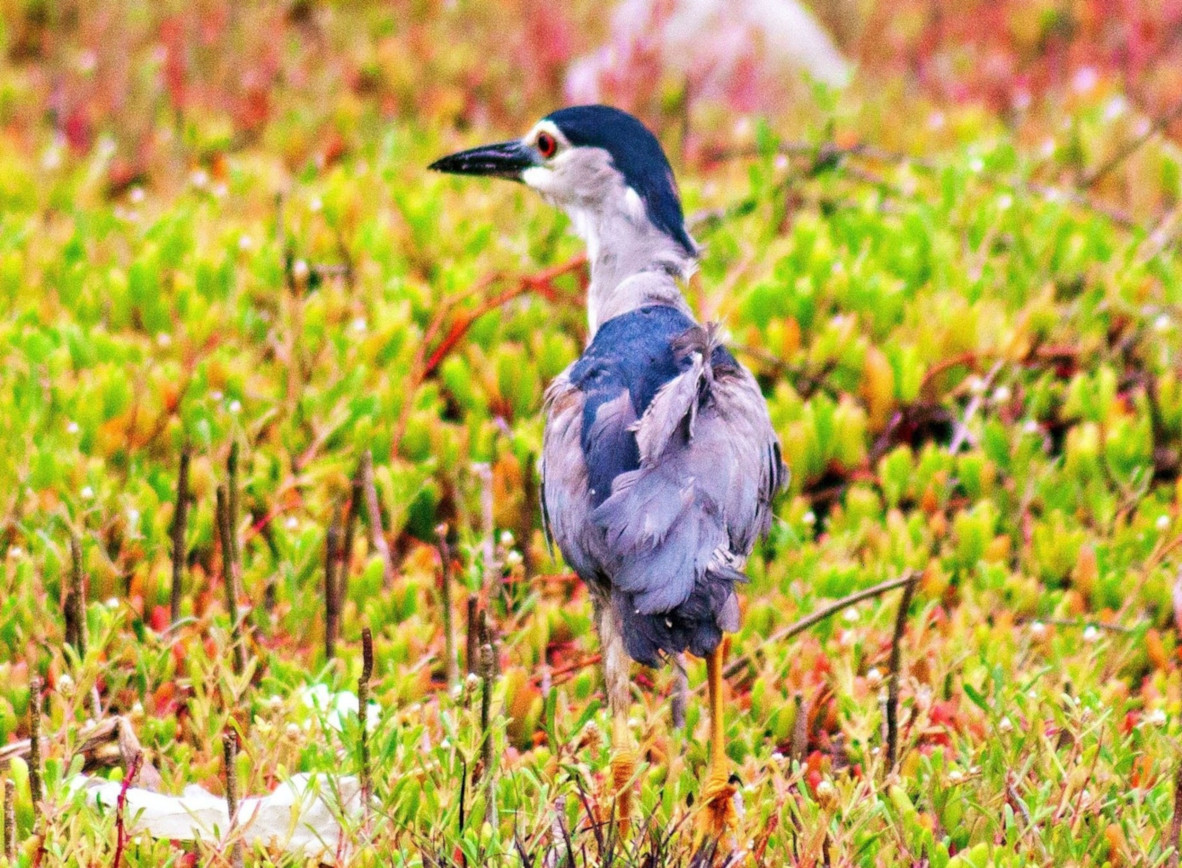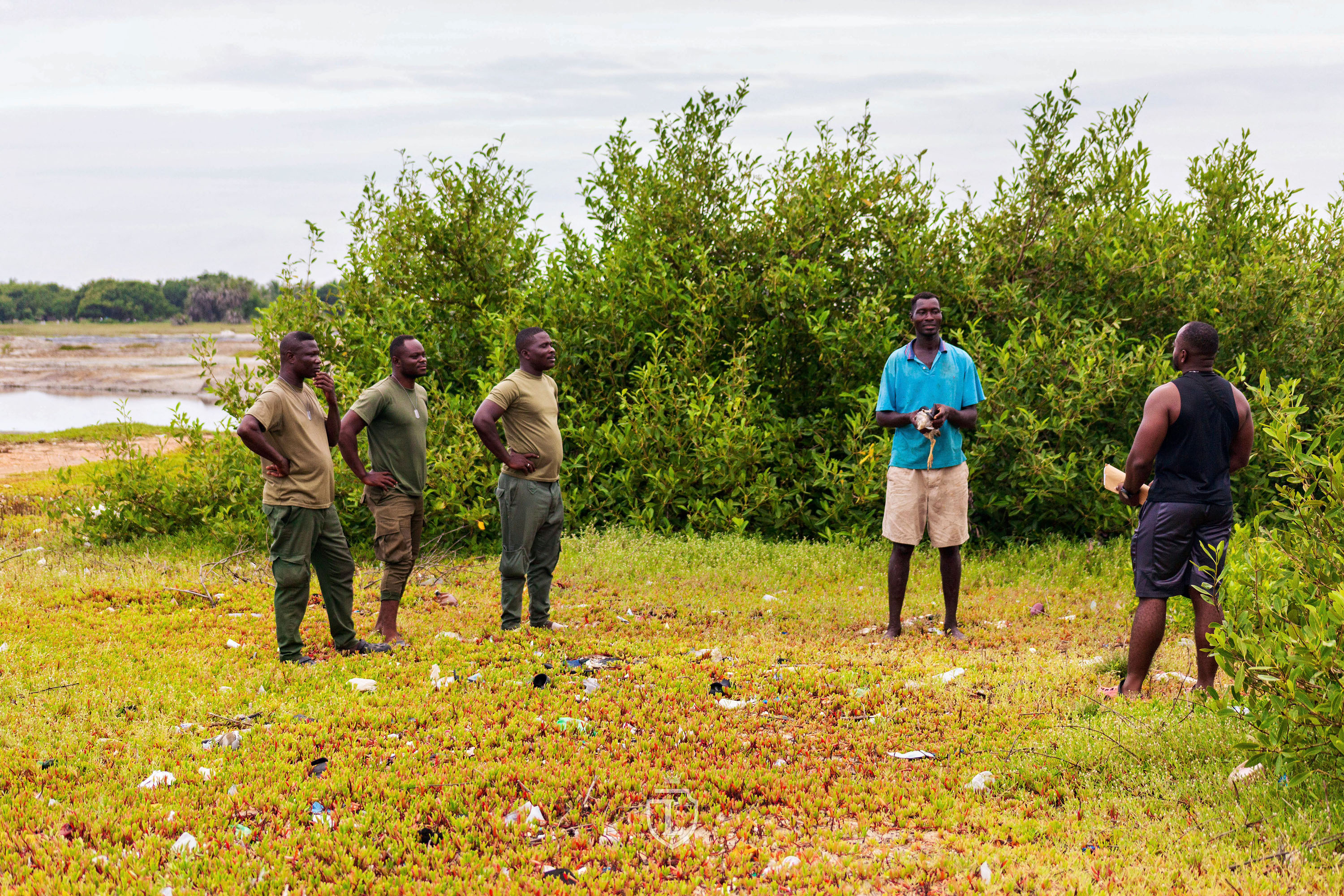Rescue and Release of a Black-crowned Night Heron at Songor Ramsar Site, Ghana

After being freed, the Black-crowned Night Heron strides confidently back into the mangroves at the Songor wetlands. © Alfred Vanderpuye of LV Studios
Waterbirds are among the most fascinating and vulnerable travelers on Earth. Every year, species like the Black-crowned Night Heron (Nycticorax nycticorax) migrate thousands of kilometers along the East Atlantic Flyway, connecting wetlands from Europe to West Africa. Wetlands such as the Songor Ramsar Site in Ghana are not only critical resting and breeding grounds but also lifelines for local communities who rely on these ecosystems for food and livelihoods.
Yet, these wetlands face continuous threats: habitat loss, overfishing, pollution, and unintentional capture of wildlife. Protecting waterbirds requires more than laws; it demands collaboration between conservationists, wildlife officers, and local communities. A recent encounter at the Songor Man and Biosphere Reserve illustrates how human engagement can turn potential threats into conservation success.
A Surprising Discovery
During a routine survey to monitor breeding waterbirds in the Ada West District, our team came across a fisherman carrying a live Black-crowned Night Heron in a basin alongside his catch. The bird had been accidentally trapped in his fishing net.
“It was clear he didn’t intend any harm,” said one of the wildlife officers. He had untangled the bird and was taking it home to eat. At first, there was tension, but we knew this was a teaching moment.
The encounter highlighted the delicate balance between human livelihoods and wildlife conservation. For many fishers, the wetlands are a source of survival, yet for migratory birds, they are critical habitat. Such bycatches are common in the coastal areas, where not only waterbirds but also turtles have been found entangled in fishing nets.
Rapid and Thoughtful Action
Recognizing the heron’s protected status under Ghanaian wildlife laws, the team calmly engaged the fisherman in conversation, with support from the Wildlife Division. The discussion covered:
-
The bird’s ecological importance
-
Legal protection under Ghanaian legislation
-
The consequences of capturing protected species
After a quick health assessment confirmed the heron was unharmed, it was carefully released back into the mangrove stands of the Songor wetlands. The bird immediately resumed its natural behavior, striding confidently into the water.
“We always stress a gentle approach,” said a Wildlife Division officer present. “Educating rather than punishing creates allies for conservation.”
Building Human Connections
Perhaps the most powerful moment was the fisherman’s response. Instead of reacting defensively, he expressed curiosity and willingness to participate in conservation efforts. He agreed to become a community liaison, assisting in wetland biodiversity protection programs.
In the Bijagós Archipelago, Guinea-Bissau, youth and women have been trained in bird monitoring, allowing them to act as custodians of important migratory species. In Senegal, local communities are protecting critical sites while improving their livelihoods. Such examples demonstrate that conservation is strongest when humans are partners, not adversaries.
Conservation Lessons

This encounter provided a unique opportunity to:
Educate: The fisherman learned about the heron’s role in wetland ecosystems, including controlling fish and insect populations.
Raise Awareness: Understanding the Ramsar designation of Songor emphasized its global ecological significance.
Strengthen Trust: Positive, respectful engagement fosters long-term community participation in wildlife protection.
Mr. Apenkwah, the site manager, said:
“Every encounter like this matters. When communities see that wildlife protection respects their livelihoods, they become active partners rather than passive observers.”
The Bigger Picture
While the Black-crowned Night Heron is classified as Least Concern by the IUCN, localized threats can impact populations dramatically. Wetlands like Songor are critical stopovers for migratory birds, supporting global biodiversity and maintaining ecosystem services such as flood control and fisheries.
Community engagement ensures that conservation is not just about protected areas on a map, but about people actively safeguarding nature. Awareness campaigns, training, and rapid response interventions reduce accidental harm and promote a culture of stewardship.
The successful rescue and release of a Black-crowned Night Heron at the Songor Ramsar Site illustrates a key truth: wildlife conservation is as much about people as it is about species. By combining education, community participation, and rapid field action, conservationists can transform potential conflicts into success stories.
As wetlands across Ghana and West Africa face increasing pressure, these human-centered approaches are vital. Empowered communities mean safer habitats, healthier ecosystems, and a sustainable future for migratory waterbirds like the Black-crowned Night Heron.
As I reflect on this encounter, I remember the words of my mentor, Professor Ntiamoa-Baidu, and I paraphrase, “Protecting waterbirds isn’t just about saving a species; it is about connecting people to nature and ensuring that both can thrive together.”
